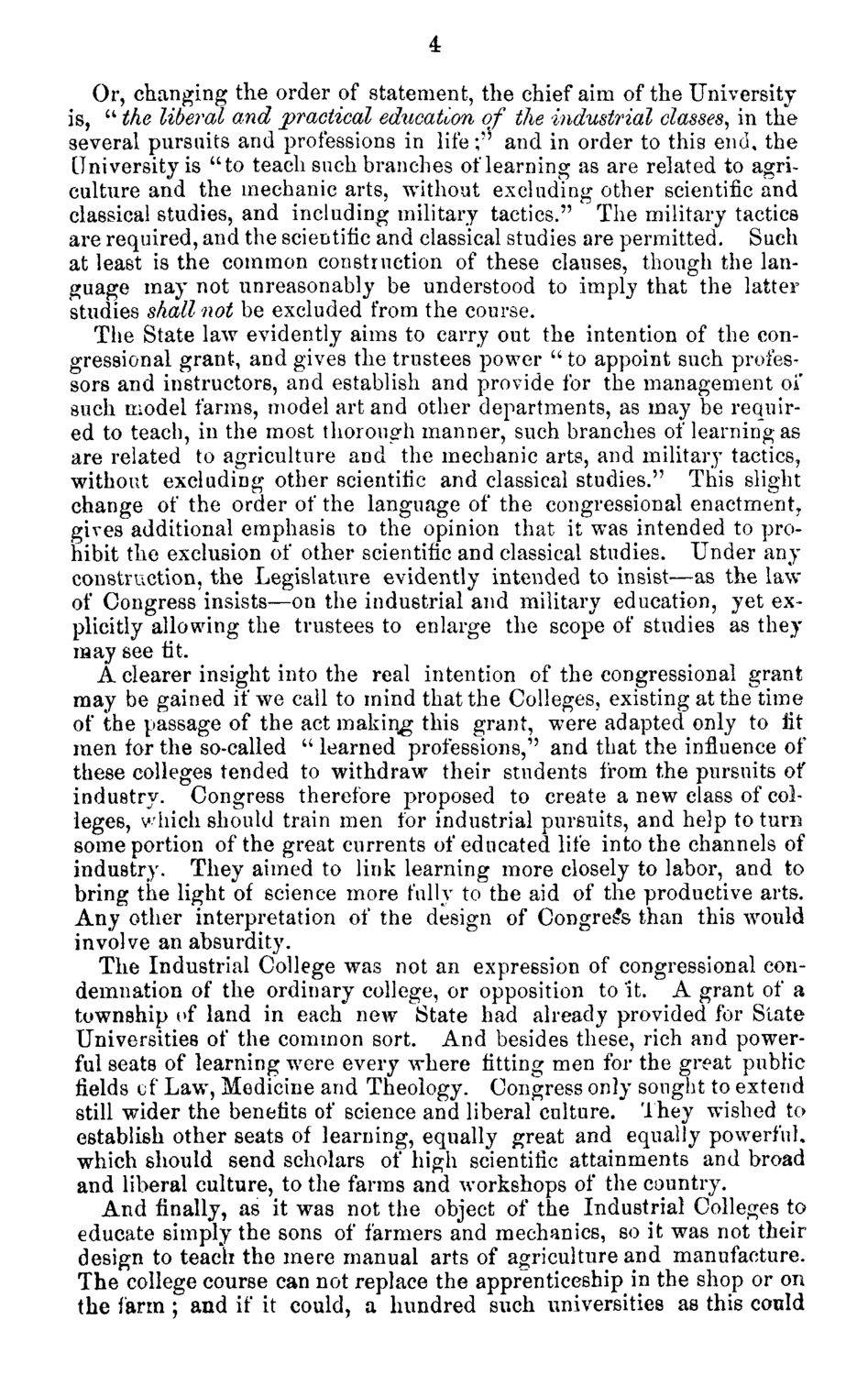| |
| |
Caption: Course Catalog - 1867
This is a reduced-resolution page image for fast online browsing.

EXTRACTED TEXT FROM PAGE:
Or, changing the order of statement, the chief aim of the University is, " the liberal and practical education of the industrial classes, in the several pursuits and professions in life;" and in order to this end, the University is "to teach such branches of learning as are related to agriculture and the mechanic arts, without excluding other scientific and classical studies, and including military tactics." The military tactics are required, and the scientific and classical studies are permitted. Such at least is the common construction of these clauses, though the language may not unreasonably be understood to imply that the latter studies shall not be excluded from the course. The State law evidently aims to carry out the intention of the congressional grant, and gives the trustees power " to appoint such professors and instructors, and establish and provide for the management oi' such model farms, model art and other departments, as may be required to teach, in the most thorough manner, such branches of learning as are related to agriculture and the mechanic arts, and military tactics, without excluding other scientific and classical studies." This slight change of the order of the language of the congressional enactment, gives additional emphasis to the opinion that it was intended to prohibit the exclusion of other scientific and classical studies. Under any construction, the Legislature evidently intended to insist—as the law of Congress insists—on the industrial and military education, yet explicitly allowing the trustees to enlarge the scope of studies as they may see tit. A clearer insight into the real intention of the congressional grant may be gained if we call to mind that the Colleges, existing at the time of the passage of the act making this grant, were adapted only to lit men for the so-called " learned professions," and that the influence of these colleges tended to withdraw their students from the pursuits of industry. Congress therefore proposed to create a new class of colleges, which should train men for industrial pursuits, and help to turn some portion of the great currents of educated life into the channels of industry. They aimed to link learning more closely to labor, and to bring the light of science more fully to the aid of the productive arts. Any other interpretation of the design of Congress than this would involve an absurdity. The Industrial College was not an expression of congressional condemnation of the ordinary college, or opposition to it. A grant of a township (>f land in each new State had already provided for Slate Universities of the common sort. And besides these, rich and powerful seats of learning were every where fitting men for the great public fields cf Law, Medicine and Theology. Congress only sought to extend still wider the benefits of science and liberal culture. They wished to establish other seats of learning, equally great and equally powerful. which should send scholars of high scientific attainments and broad and liberal culture, to the farms and workshops of the country. And finally, as it was not the object of the Industrial Colleges to educate simply the sons of farmers and mechanics, so it was not their design to teach the mere manual arts of agriculture and manufacture. The college course can not replace the apprenticeship in the shop or on the farm ; and if it could, a hundred such universities as this could
| |